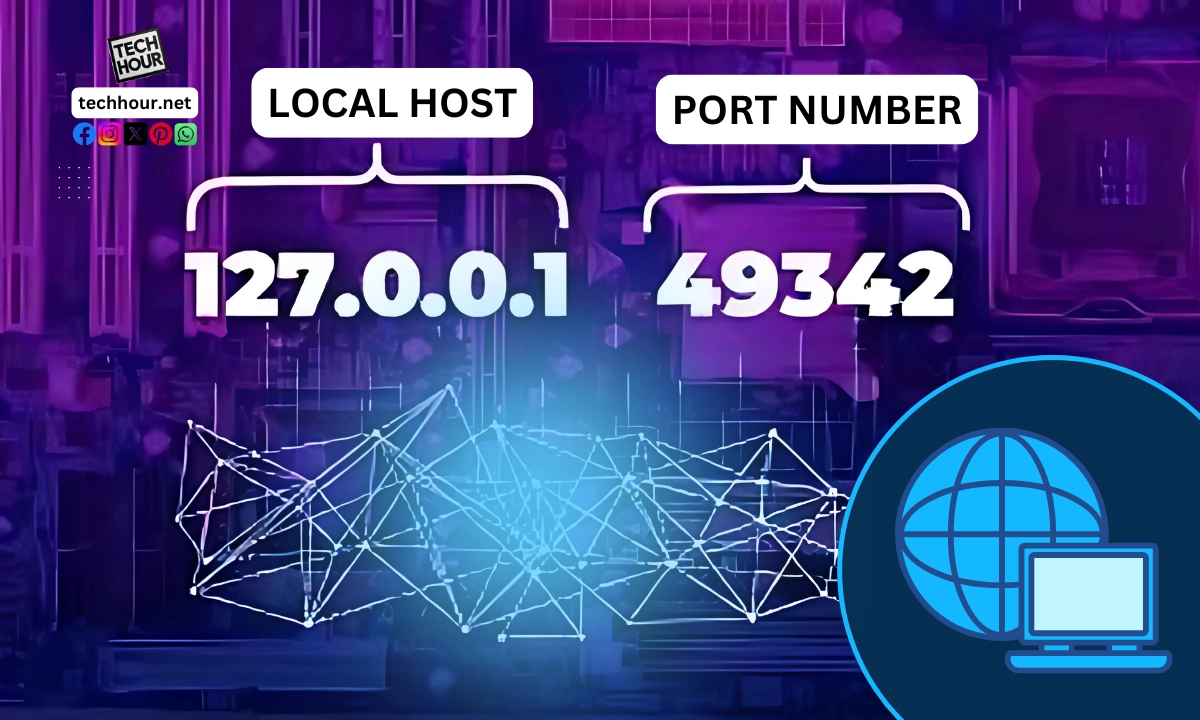If you have had the same question about how apps are developed without affecting the real world then you are not alone. It is a mystery for many people as to what use such an isolated address such as 127.0.0.1:49342 has in software development.
This address, known as the loopback address, allows you to test applications on the devices without worrying about outside interaction. It makes communication as well as debugging tasks easy.

By making use of localhost, more accurately the 127.0.0.1 address, you can carry out server operations without risks of connecting to any internet services. A lot of developers have this setup so they can verify the correct operations of their applications without putting it on the internet.
If you can interpret what the string 127.0.0.1:49342 means, then it means you have advanced in terms of networking and communication for application testing.
Getting insight into this great yet easy tool will aid your skills in development. Moreover, when seasoned in development a person with such a tool can avoid most stresses associated with testing.
Understanding IP Addresses and Ports
Endpoints in a network are called IP addresses and their port number serves as an identifier of the application, service, or session running on that endpoint which is a fundamental aspect of networking and communication. These steps make sense in various tasks such as configuring networks, setting up servers, or resolving problems.
Basics of IP Addressing
The first type of an address on the Internet is called an Internet Protocol address or an IP address. As a starting point, it is necessary to differentiate between two types of IP addresses, namely IPv4 and IPv6.
The IPv4 version which is usually shown as 127.0.0.1 addresses a computer user’s device by utilizing four groups of figures each ranging between 0 to 255.
Port numbers can also be referred to as numbers associated with specific IPs, but in this case, I shall elaborate more on one specific number used in several IP addresses, the loopback address. The loopback address is also known as localhost and is assigned the number 127.0.0.1. This address tells a device to send data to itself, enabling the user to test several applications with great ease. That is, when you request an address of 127.0.0.1, you are addressing your device.
There are two categories of the IP Address: the public and the private IP Address. Public addresses are viewed by far-off networks while private ones are shielded by routers and firewalls. This helps in forming a secure environment for the network.
Significance of Port Numbers
To enable services on a personal computer, devices, and other tech applications, Port numbers are employed along with IP Addresses. Each of the ports enables communication channels and therefore many applications may be run simultaneously under a single IP Address.
The possible values for port numbers range between 0 to 65535. For example, 49342 can be viewed as a particular port that is frequently used during the testing of a network for temporary connections. Connections of a temporary nature are referred to as ephemeral ports which prevent potential clashes with some widely known ports like those assigned to web hosting devices.
As a developer or tester, understanding port numbers is key to being able to connect with the appropriate service during application deployment or testing.
Moreover, it is also vital to set up firewalls to limit access to only certain ports for safety and access.
Exploring the Loopback Address
In networking, the loopback address 127.0.0.1 comes in handy as it enables one to send and receive data to the device itself. It is very helpful when seeking to develop and debug programs.
Besides, Using the loopback address ensures that applications function as they should while working on an external network. You can create client-server relationships and use them as you wish. This is particularly handy with regard to validating web servers and other accessible network services.
In this case, the TCP protocol has what is referred to as a loopback address which enables communication across most devices. This makes sure that the TCP/IP settings on your computer and the application itself are operating normally without bringing other external elements into the equation.
Security and Troubleshooting

Finally, when using 127.0.0.1:49342, it is important to address issues of local server security and eliminate common mistakes. It is necessary to bolster the existing measures against intruders and efficiently resolve internal conflicts.
Securing Local Servers and Services
To secure your local server at (127.0.0.1:49342), start off by creating a strong firewall. A correctly set up firewall serves to facilitate access and deny undesirable traffic.
You ought to formulate rules that permit only approved applications and services. For example, you can configure IP restrictions such that only your machine can communicate with the local host.
With a VPN, you can further enhance this protection, since it will also encrypt any communication between your device and the services that you will be using outside.
Make it a habit to always patch your application to reduce exposure to exploits. This secures your APIs and other networked applications from prospective attack vectors.
Troubleshooting Common Errors
The first thing to be on the lookout for when you have issues with 127.0.0.1:49342 is checking error messages. Most of the common errors emanate from setting up the server parameters inappropriately or the network parameters are incorrect.
You should check server logs for warnings or errors. Such logs assist in getting an idea of things that could be taking place. For example, search for error codes or messages as a starting point of investigation.
In the event you are not able to get connected, check your TCP/IP setup. Running Windows Commands will show details of the port you are using and other services that could be occupying the port. If it appears that your server is only able to listen on the port, consider restarting the server as this will likely resolve minor bugs.
Best Practices in Network Configuration
Best practices in a network configuration will assist in creating a secure infrastructural environment.
For example, consider restricting access to domain controllers to system administrators so that core modifications can only be done by the domain users who have been approved for that specific role.
Aside from implementing complex role definitions, users must review their firewall settings regularly to ensure that these settings are consistent with the organization’s security protocol.
Hints and Tips: You can incorporate logging as a best practice in enhancing the consistently fragmented log organization structure of computing equipment. Lots of people are advised to utilize documentation on different networking configurations for further instances of troubleshooting.
FAQs

An additional strategy would be such that no service running on the address 127.0.0.1 will be blocked, instead a prompt would be displayed asking users for permission.
How can one access a service running on 127.0.0.1?
So yes to join a service that is on 127.0.0.1, it is easy: to open a browser or a piece of software geared towards bridging service. The ultimate step would be typing the addresses such as ‘http://127.0.0.1:49342’.
How do you deal with refused connections on a local host?
When the denial of connection happens and the server is not started then make sure the application service is active because the service could have been terminated.
If the server is not active, reboot the service. Additionally, ensure that the connection request is for the appropriate port, which in this case is 49342.
What are the potential reasons that the localhost server is unable to be connected?
The potential reasons when the localhost server is unable to be connected can be multiple. One could be that the server software has hung, or it has not yet been commenced.
Some of the additional reasons could be network settings configuration or a firewall on the device that is in use. Tweaking these configurations could help solve the problem at hand.
In which use cases is port 49342 used?
Port 49342 is useful for local development and testing of the application. It enables the developer to mock the server calls and does not require an external network connection during the development process.
To reduce the chances of conflict with well-known ports, it is common to use high-numbered ports like 49342 in many development environments.
What precautions should be taken for local services when exposed on localhost?
Running any service on a local host would be relatively secure as the service is not reachable from the outside world, but all local security measures are still necessary.
Even if your application helped in preventing external attacks, it is still crucial to ensure that it‘s safe from internal attacks as well. We are using good passwords and secure configurations.
What is the difference between localhost and IP?
A local host is an address specific to your computer that corresponds to the number 127.0.0.1. It helps in having internal networking without the need for external networking facilities.
On the other hand, Public IP is that which is used to identify computers and resources on a global network i.e. any internet. This means it can be reached from any device, making it subject to different security challenges.




